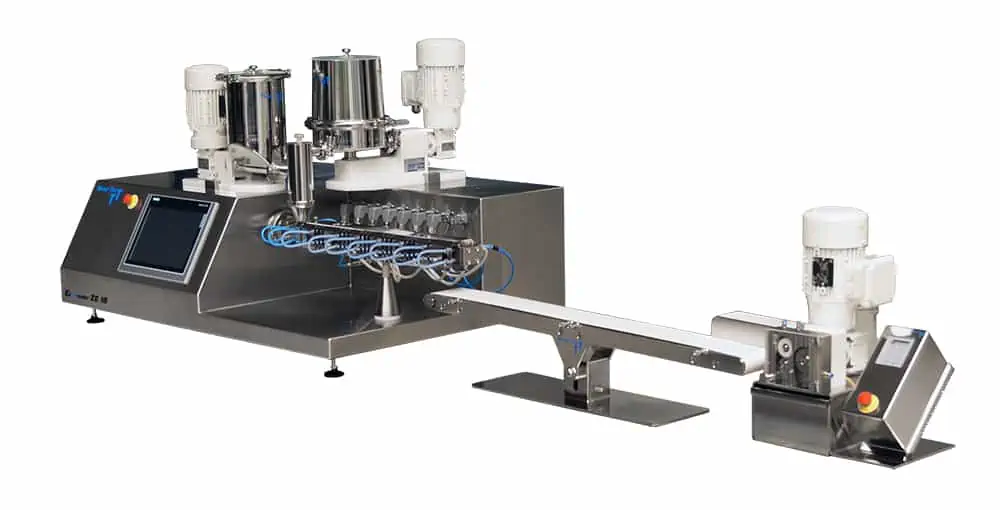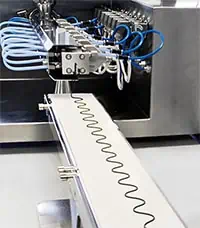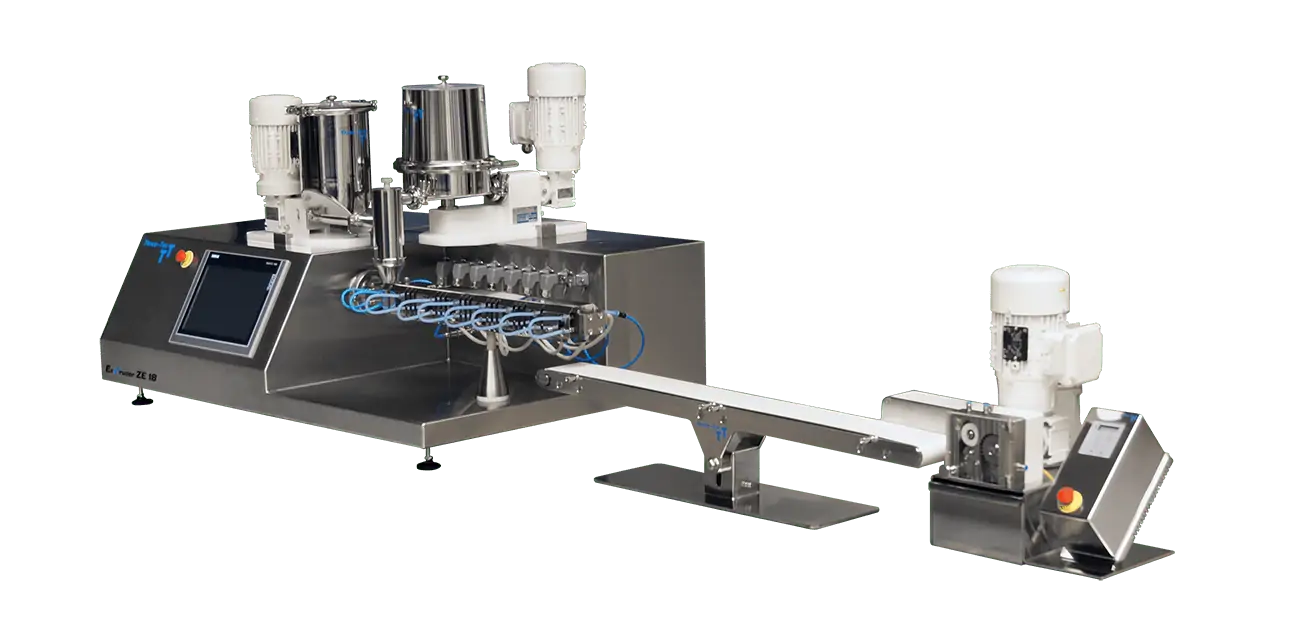Most of our equipment is developed and produced specifically to customer requirements. This was also the case with a production line for the manufacture of ceramic injection molded feedstocks, which was recently delivered. Although the customer initially wanted to procure a shear roll, trials in our laboratory convinced him of the suitability of our twin-screw extruders for his requirements.
| Extruder: ZE 18 HMI Metering device: ZD 12 twin screw feeder with flat-tray, ED 20 single screw feeder Process Equipment: Cooling conveyor belt, granulator Batch weight: 1 to 10 kg Application: Research & Development Customer: Zurich University of Applied Sciences (ZHAW) |
The first contact with the customer, the Zurich University of Applied Sciences (ZHAW), came about as a result of a recommendation from an existing customer. The customer was looking for a shear roll for the production of ceramic injection molding (CIM) feedstocks in laboratory scale. This was to be used to produce batches of one to ten kilograms from a mixing unit.
As a specialist for customized solutions, we wanted to offer the customer a hand, even though we had not manufactured shear rolls ourselves before. Since the technology of shear rolls and extruders is related, it was agreed in a first step to carry out trials on an existing twin screw extruder in the Three-Tec laboratory to test whether an extruder would also be suitable for the application as an alternative. Although the customer already had a laboratory extruder from a competitor, it was unsuitable due to the low torque and insufficient mixing effect, which led the customer to focus on a shear roll.
The trials at Three-Tec were carried out using a ZE 18 extruder with a screw diameter of 18 mm and a process length of L/D 40 (720 mm) to test its performance in terms of compounding and homogenization. For this purpose, a powder feeder was used for the pre-mix of three solid components, a pellet feeder for the pre-mix of two binder components, a conveyor belt for uniform discharge and cooling of the extrudate, and a pelletizer. Following the tests, the extruder was cleaned with cleaning granules, whereby the cleaning time could be massively reduced compared to normal manual cleaning.
The extruded and granulated materials from the tests were collected by the customer for further analysis.
The successful tests, which exceeded the customer's expectations, led to the order of the complete set of equipment with which the tests were carried out.
The main reasons for the decision in favor of the extruder were:
- extrusion as a continuous process incl. automated feeding of raw materials
- very good melting, homogenizing, dispersing properties
- a lower throughput time and a single-stage instead of a multi-stage process, compared to the existing laboratory extruder
- the resulting highly efficient production of ceramic injection molded feedstocks and significant simplification of work in the laboratory
The plant was specifically developed and produced by Three-Tec's specialists according to ZHAW's requirements. After efficient manufacturing time following the order, the new plant could finally be put into operation at the customer's site.
| "In our search for a device for the homogenization of ceramic injection molding or 3D printing feedstocks, we contacted Three-Tec and were quickly convinced during initial tests on site that a high-performance extruder is more versatile for us in the area of research and development and easier to clean/maintain than a shear roll, which we had also considered. Finally, the competent advice and the good and uncomplicated service from Three-Tec were also decisive in ordering a ZE 18 extruder, which is now being used at the ZHAW for current and hopefully many future projects." Dr. René Wick-Joliat, Laboratory for Ceramic Materials, ZHAW |


Are you also looking for a device or system that meets your specific needs? Then we look forward to hearing from you. You can also find the steps involved in creating a customised unit on our webseite.
